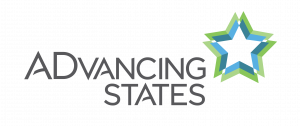Nursing Facility Transitions
NEW JERSEY
Identified Problems with the State's Long-Term Care System
- Institutional bias is responsible for high numbers of people in institutions and a comparatively underdeveloped system of community care.
- The long-term care system is fragmented.
- Current funding for nursing home transition is not sufficient to adequately address transition issues for the younger disabled population.
- Lack of affordable accessible housing.
- Independent Living Centers (ILCs) are inexperienced in serving individuals with mental illness.
- Lack of access to information about independent living options and resources for people with disabilities and their families.
Perceived Strengths
- State funding can be used for transition expenses.
- There are committed state officials and agencies, working in collaboration with community agencies and programs, to assure better community integration for people with disabilities.
- There is a range of Medicaid HCBS waiver programs and other state- and federally-funded community services.
- A strong network of ILCs is in place, which is managed and staffed by individuals that are experienced in living and coping with disabilities.
Primary Focus of Grant Activities
- Increase access to information and resources regarding independent living options.
- Develop cohesive community support systems to prepare and sustain individuals both before and after transition.
- Facilitate consumer control over the individual transition process.
- Incorporate direct consumer input into the planning, implementation and phasing of infrastructure changes.
Goals, Objectives, and Activities
Overall Goal. Conduct an assessment of individuals with disabilities who are under 65 and residing in nursing facilities, and transition 200 individuals to the community over the 3–year grant period.
Goal. Incorporate direct consumer input into the planning, implementation and phasing of infrastructure changes.
Objectives/Activities
- Transition the Olmstead Stakeholders Task Force to the New Jersey Systems Change Advisory Council.
- Form a Systems Change Management Team comprised of staff from all agencies.
- Develop an Advisory Board that will provide guidance and direction to the Resources for Independent Living (RIL) staff and will be involved in all areas of implementation, management and evaluation of grant activities.
- Create mechanisms to facilitate people with disabilities in choosing and directing the services and supports they need, consistent with their stated preferences.
Goal. Provide adequate information, training and support to individuals transitioning out of nursing facilities into the community.
Objectives/Activities
- Develop and conduct training of staff for the state's permanent nursing facility transition program, Community Choice, to increase staff's ability to deal effectively with people with disabilities who are under age 65.
- Develop outreach and marketing materials about nursing home transition and community options for transitioning individuals and provide opportunities for transitioning individuals to participate in skills training and peer support groups.
- Utilize ILC staff to educate individuals with disabilities in nursing facilities about their options for community services and supports.
- Utilize ILC staff to provide independent living skills training to people in nursing facilities.
- Recruit one full-time and one part-time Community Living Specialist (CLS) to work with the Community Choice Counselors.
- CLS staff will develop an individualized Independent Living Plan that will detail consumer goals, objectives, and timelines, and areas of responsibility for every transitioning individual.
- Develop a community services assessment tool to identify what a consumer will need after transition. This will be used in conjunction with the DHSS comprehensive needs assessment.
- Develop mentoring and peer support programs with volunteer consumers in the community.
- Develop a mentoring program that will match individuals leaving nursing facilities with trained peer mentors from local ILCs.
Key Activities and Products
- ILCs will partner with DHSS to conduct an outreach to, and an assessment of, 3,000 persons under 65 currently living in New Jersey nursing facilities and then assist approximately 200 individuals to transition to community living.
- Develop a community assessment tool to be used in conjunction with the DHSS comprehensive needs assessment.
- Develop and implement nursing home transition training materials for consumers, Community Choice counselors, and volunteer community mentors that will be used to increase access to resources regarding independent living options, increase independent living skills, and enable counselors and mentors to better to serve the nursing home population during transition.
- Develop and provide mentoring and peer support programs.
Consumer Partners
- People with disabilities constitute the majority on the boards of all ILCs, including the lead agency, and form the majority of staff at the ILCs involved in the grant.
- At the state level, the Governor convened an Olmstead Stakeholder Task Force in November 2000, which includes consumers and family members. The state plans to transition the existing Olmstead Stakeholders Task Force to the New Jersey Systems Change Advisory Council. The Advisory Council will retain existing participants and recruit additional consumer representatives. Consumers will serve on all four subcommittees of the advisory council.
- RIL will develop an Advisory Board, consisting of the executive directors of three ILCs in the state, consumers, mental health advocates, and representatives from other disability organizations. The Advisory Board will meet at least quarterly and help to shape grant activities.
Consumer Partners and Consumer Involvement in Planning Activities
- The Olmstead Task Force, including its consumer members, was involved in developing the grant application and other systems change proposals.
- RIL staff and board members with disabilities were greatly involved in all aspects of grant development.
Consumer Partners and Consumer Involvement in Implementation Activities
- Consumer advocates will be instrumental in the transition of the Olmstead Stakeholders Task Force to the New Jersey Systems Change Advisory Council. Consumers will participate on all four subcommittees of this council.
- RIL's Advisory Board will provide guidance and direction to the RIL staff and will be involved in all areas of implementation, management, and evaluation of grant activities.
- Because of consumer control of the ILC organization, persons with disabilities will be involved in all stages of problem analysis, planning, implementation, monitoring, and evaluation activities.
- Consumers will also participate in mentoring and peer support programs.
Public Partners
- Department of Health and Senior Services, Community Choice Initiative.
- New Jersey Housing and Mortgage Financing Agency (HMFA).
- Rutgers University Center for State Health Policy.
Private Partners and Subcontractors
- New Jersey Protection and Advocacy Technology Assistive Resource Center (TARP).
- Network of ILCs.
Public and Private Partnership Development/Involvement in the Planning Phase
Public Partners
Department of Health and Senior Services (DHSS) helped design the framework of the grant application and included the hiring of new Community Choice Counselors. DHSS was involved in all aspects of planning the grant.
Private Partners
No private partners were involved in the planning of the grant.
Public and Private Partnership Development/Involvement in Implementation
Public Partners
- DHSS will be involved in the outreach to, and the assessment of, 3,000 persons under 65 currently living in New Jersey nursing facilities. DHSS will provide funding to hire four Community Choice Counselors for these activities. The Community Choice Counselors will work closely with transitioning individuals throughout the grant period.
- New Jersey Housing and Mortgage Financing Agency will help assure that a supply of accessible, affordable housing options are made available.
- Rutgers Center for State Health Policy will be working with the ILC staff to develop interview instruments during the first six months that will be utilized for the evaluation research on individuals who are transitioned from nursing facilities. Rutgers also will conduct an independent evaluation of the grant.
Private Partners
- New Jersey TARP will help RIL in making the best possible use of technology and technological solutions to support people with disabilities in the community with specific problems due to unique needs.
- Each local ILC, in conjunction with CLS, will develop an individualized Independent Living Plan that will detail consumer goals, objectives and timelines, and areas of responsibility for every transitioning individual. In addition, ILCs will work with RIL to recruit, train, and support volunteers who will assist consumers in transitioning from nursing facilities. A mentoring program will be developed that will match individuals leaving nursing facilities with trained peer mentors from local ILCs. Peer mentors will be recruited from ILC network staff/volunteers with disabilities who themselves live independently in the community.
Existing Partnerships That Will Be Utilized to Leverage or Support Project Activities
Division of Disability Services (DDS) received state appropriation of $2 million to design and implement a new Medicaid waiver program targeted to the younger disabled population.
Oversight/Advisory Committee
- The New Jersey Systems Change Advisory Council will be convened during the first 6 months and will meet quarterly during year one and twice a year during the remainder of the grant period. This Advisory Council will provide direction to the state in developing and implementing the activities proposed in the System Change Grant applications.
- There will be four subcommittees of the Advisory Council, including Housing, Support Services, Access, and Quality. The subcommittees will report to the Advisory Council and make recommendations relative to grant activities. The Advisory Council will provide recommendations to the Governor, the state agencies, contracted consultants, and firms who are implementing activities proposed in this grant.
- The RIL Advisory Board will meet at least quarterly and help to shape the implementation, management, and evaluation of grant activities.
Formative Learning and Evaluation Activities
- The review activities of the RIL Advisory Board will provide input and suggestions regarding outreach techniques, and suggest possible resolutions to challenges faced in transition.
- Each transitioning consumer will develop a team of people to assist them meet their goals with the aid of Grant personnel. Included in the team will be the Community Choice Counselor (DHSS), at least two ILCs, and representatives from other agencies. In addition, the team may include family members, church members, or anyone else who will play a significant role in the transfer. This newly developed "Round Table" format will expand and improve project strategies to meet both the consumer goals and the project goals.
Evidence of Enduring Change/Sustainability
- The training of Community Choice staff by ILC staff will change the way the program deals with people with disabilities and will help develop infrastructure to assure that individuals with disabilities will be able to live successfully in the community.
- The capacity of ILCs to address transition issues will be increased and sustained after the grant ends.
- Permanent linkages between ILCs, the Community Choice Initiative, and other systems will reduce fragmentation and maximize coordination.
Geographic Focus
Statewide.

